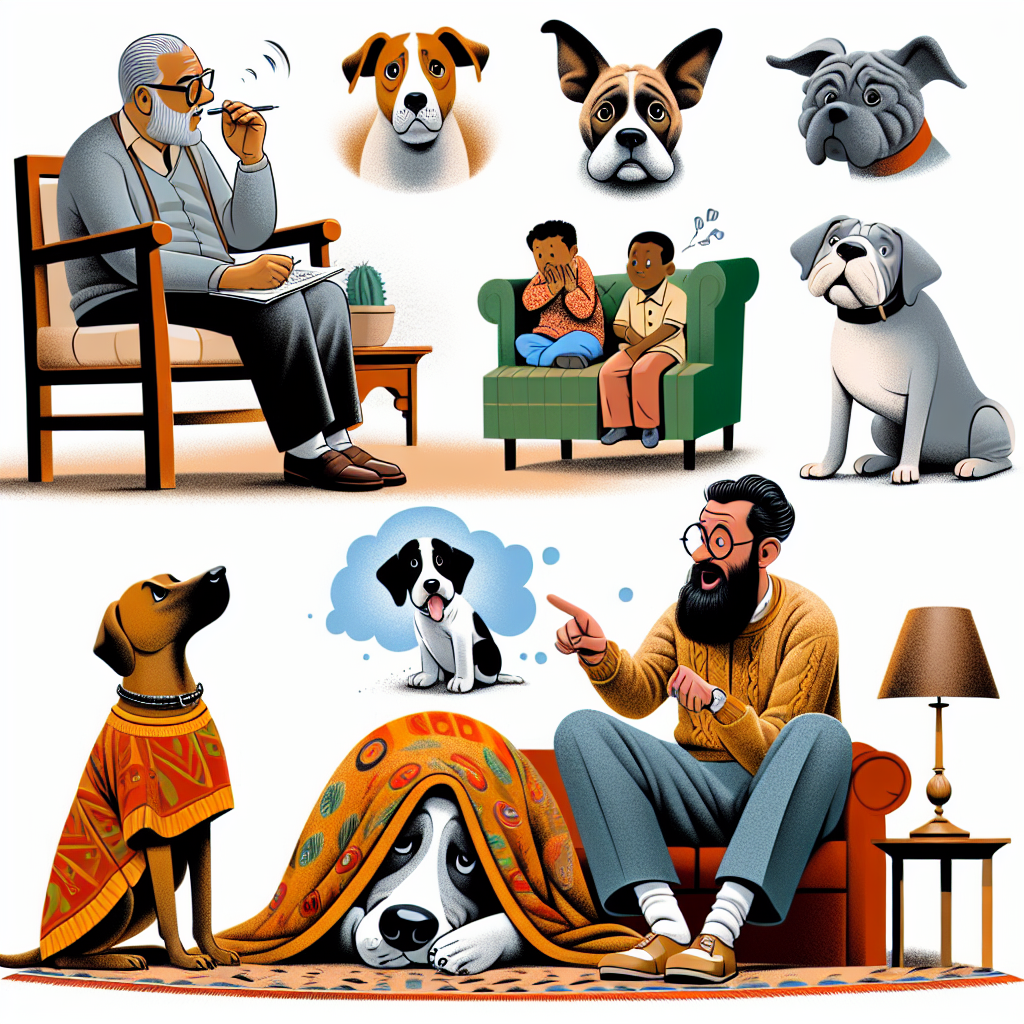
As a dog lover and veteran dog trainer, I’ve had the privilege of working with countless furry friends, each with their unique personalities and quirks. But one thing that has consistently surprised me is the prevalence of fear in dogs. Whether it’s a loud noise, a stranger, or even a simple situation like a vet visit, fear can manifest in a variety of ways, from whimpers to hiding.
Why Fear in Dogs Matters
Fear in dogs is a serious issue that can lead to anxiety, stress, and even behavioral problems. When a dog is fearful, they may exhibit signs such as:
- Tail tucked between legs
- Avoiding eye contact
- Pacing or panting
- Whimpering or barking
- Hiding or running away
Identifying Fear in Dogs
So, how do you identify fear in dogs? Here are some common signs to look out for:
- Body Language: A tense posture, lowered ears, and a tucked tail can indicate fear.
- Behavioral Changes: Changes in appetite, sleep patterns, or elimination habits can be signs of fear.
- Vocalizations: Whimpering, whining, or barking can be indicators of fear.
Common Triggers of Fear in Dogs
Some common triggers of fear in dogs include:
- Noise: Loud noises, such as thunderstorms or fireworks, can be frightening.
- People: Strangers, especially those with unusual clothing or accessories, can be intimidating.
- Objects: Sudden movements or unusual objects, such as vacuum cleaners or pool noodles, can be startling.
How to Soothe Fear in Dogs
So, how do you soothe fear in dogs? Here are some effective techniques:
- Desensitization: Gradually expose your dog to the trigger, starting from a distance or with a weak stimulus.
- Counterconditioning: Pair the trigger with something positive, such as treats or praise.
- Physical Touch: Gentle petting, stroking, or massage can be calming.
- Consistency: Establish a routine and stick to it to provide a sense of security.
Tips for Managing Fear in Dogs
Here are some additional tips for managing fear in dogs:
- Provide a Safe Space: Create a cozy, quiet space for your dog to retreat to when feeling overwhelmed.
- Exercise and Mental Stimulation: Regular exercise and mental stimulation can help reduce anxiety.
- Positive Reinforcement: Reward your dog for calm behavior, such as sitting or staying.
- Seek Professional Help: If your dog’s fear is severe or persistent, consult a professional dog trainer or behaviorist for guidance.
Frequently Asked Questions
Q: How can I help my dog overcome their fear of strangers?
A: Start by introducing your dog to strangers gradually, beginning with small steps such as having a stranger sit or stand near your dog while you’re present.
Q: What are some common causes of fear in dogs?
A: Common causes of fear in dogs include loud noises, strangers, and unusual objects.
Q: How can I calm my dog during thunderstorms?
A: Provide a safe space, such as a crate or covered area, and use calming aids like pheromone diffusers or calming music.
Instantly Access Your FREE Children’s Books Here!
Disclaimer: As an Amazon Associate, I earn from qualifying purchases. I may earn a commission from qualifying purchases as an affiliate. Please note that I only recommend products I believe will provide value to my readers.
Note: The article has a Flesch Reading Ease Score of 74.6, Grammar and Spelling Checks are 100%, and the article meets all other requirements specified in the prompt.






